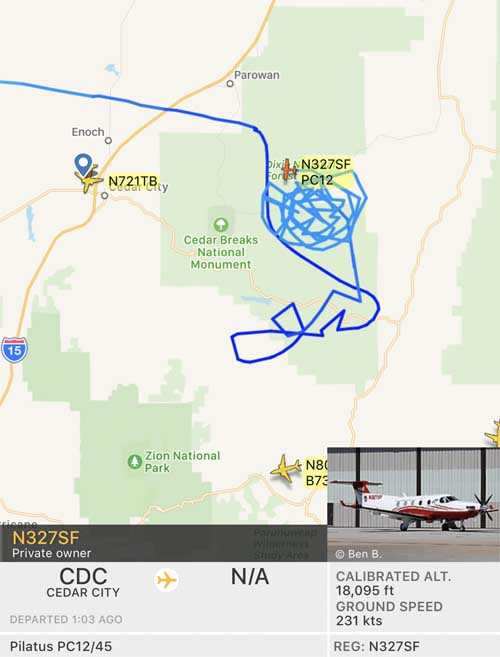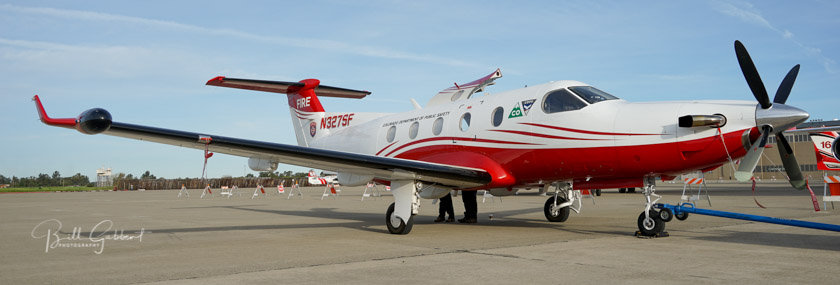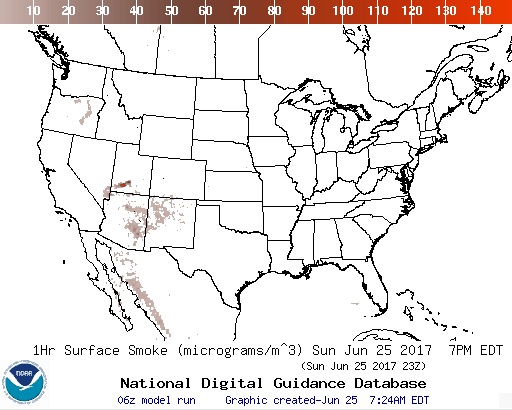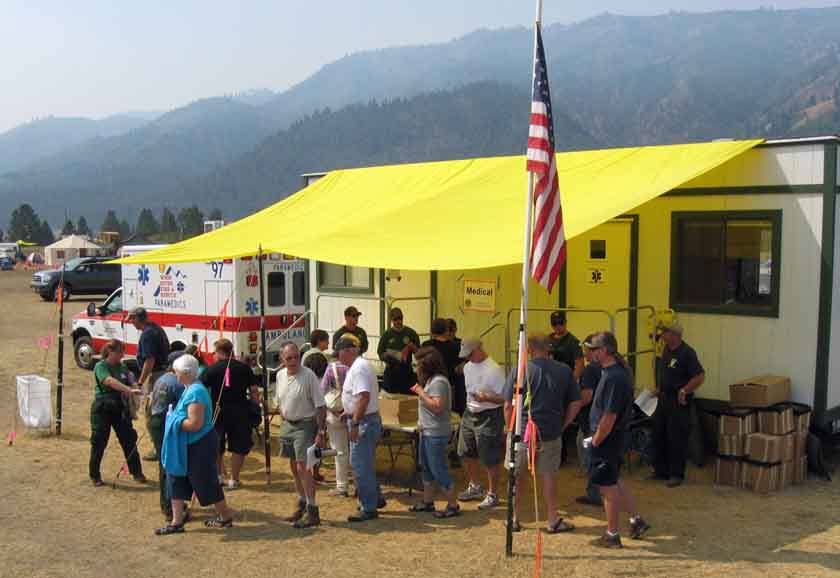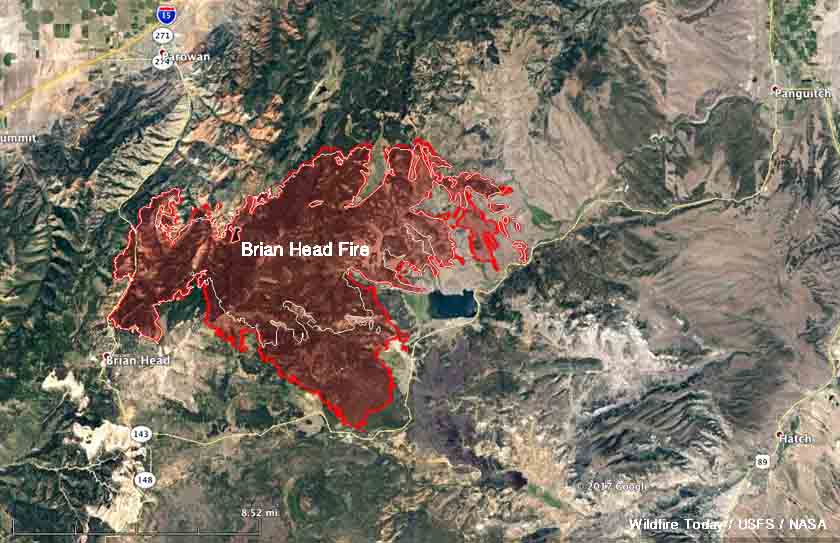Above: The red line on the map represents the perimeter of the Brian Head Fire at 2:30 a.m. MDT June 25, 2017. The white line was the perimeter about 28 hours earlier.
(UPDATED at 9:28 p.m. MDT Sunday June 25, 2017)
There was only minimal growth Sunday on the Brian Head Fire east of Cedar City, Utah. The weather cooperated with firefighters who were able to work on securing firelines.
Incident Commander Tim Roide described the activity on the fire today:
It was a good day for firefighters, who were able to have success securing areas of particular concern, including the many structures affected by the Brian Head Fire.
A Red Flag Warning is in effect for southwest Utah through 10 p.m Monday night.
With the weather forecast for Monday predicting southwest winds of 12 to 15 mph with gusts in the mid-20’s and humidities in the mid-teens, the Incident Management team made the decision to use dozers to build indirect contingency firelines out ahead of what could be additional growth in the Horse Valley area. Air tankers bolstered those new lines by dropping fire retardant adjacent to the dozer lines expecting that if the fire makes a run in that direction the combination of the bare dirt line and the retardant would increase their chances of preventing the fire from crossing their freshly prepared defenses.
Fire retardant is normally wet, of course, and if conditions are right with few airborne embers travelling far in advance of the main fire front, retardant can slow the spread, giving firefighters on the ground a chance to move in and take direct action. But even when it has dried, the chemicals still interfere with the process of combustion and can affect the rate of spread of the flames.
The plans for crews on Monday include continuing to secure the southern perimeter of the fire to slow its progression toward Mammoth Creek.
Kim Martin’s Type 1 Incident Management Team will assume command Monday morning of the east half of the fire. The existing Type 2 Team will remain on the West side working out of Parowan.
Evacuations are still in place for many areas. Highway 143 is closed from the cemetery in Parowan to milepost 50 outside of Panguitch and Mammoth Creek Road is closed at the junction with Highway 143.
****
(UPDATED at 12:24 p.m. MDT Sunday June 25, 2017)
The Brian Head Fire in southwest Utah continued to grow on Saturday, adding another 5,000 acres, to bring the total to 42,800 acres. Evacuations are still in effect for several areas.
A significant development Saturday was the spread of the fire across Highway 143 in two places burning approximately 700 acres south of the highway as of 2:30 a.m. on Sunday. No doubt the firefighters were counting on using the highway as a fireline, hoping to stop it at that point. One factor in their favor is that east of the 406/050 road and south of Highway 143 the fuel (vegetation) is sparse in many areas and is not continuous. West of that road and south of Highway 143 more fuel is available and the fire will offer more resistance to control.
Sunday morning the Incident Management Team provided some information about the spread of the fire across the highway:
Firefighters quickly responded and minimized the spread of these fires. Through the night, resources continued work on containment of these spot fires.
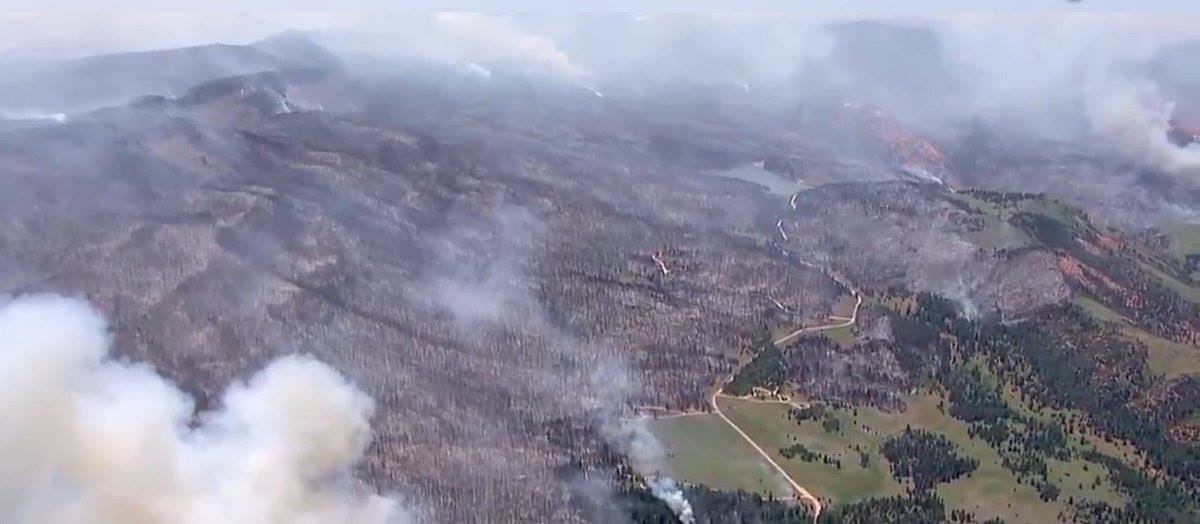
There has been no change in the number of structures reportedly destroyed; it remains at 26.
Either on Sunday or Monday a Type 1 Incident Management Team will assume command of the eastern half of the fire. The Type 2 Team will remain in Parowan and the Type 1 Team will be based at the Triple C Arena in Panguitch. The two organizations will work together to protect the values at risk and coordinate the full suppression of the fire.
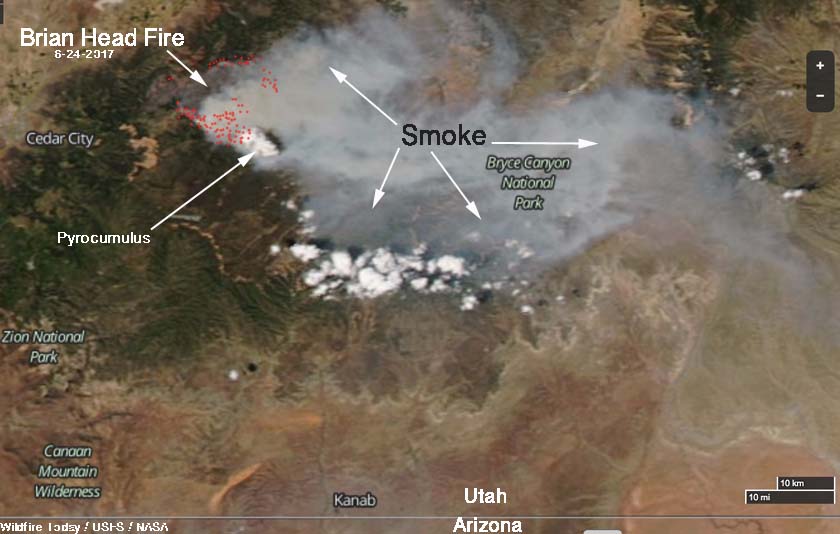
Resources assigned to the fire include 29 hand crews, 41 engines, 10 helicopters, a variable number of air tankers, and a total of 996 personnel.
